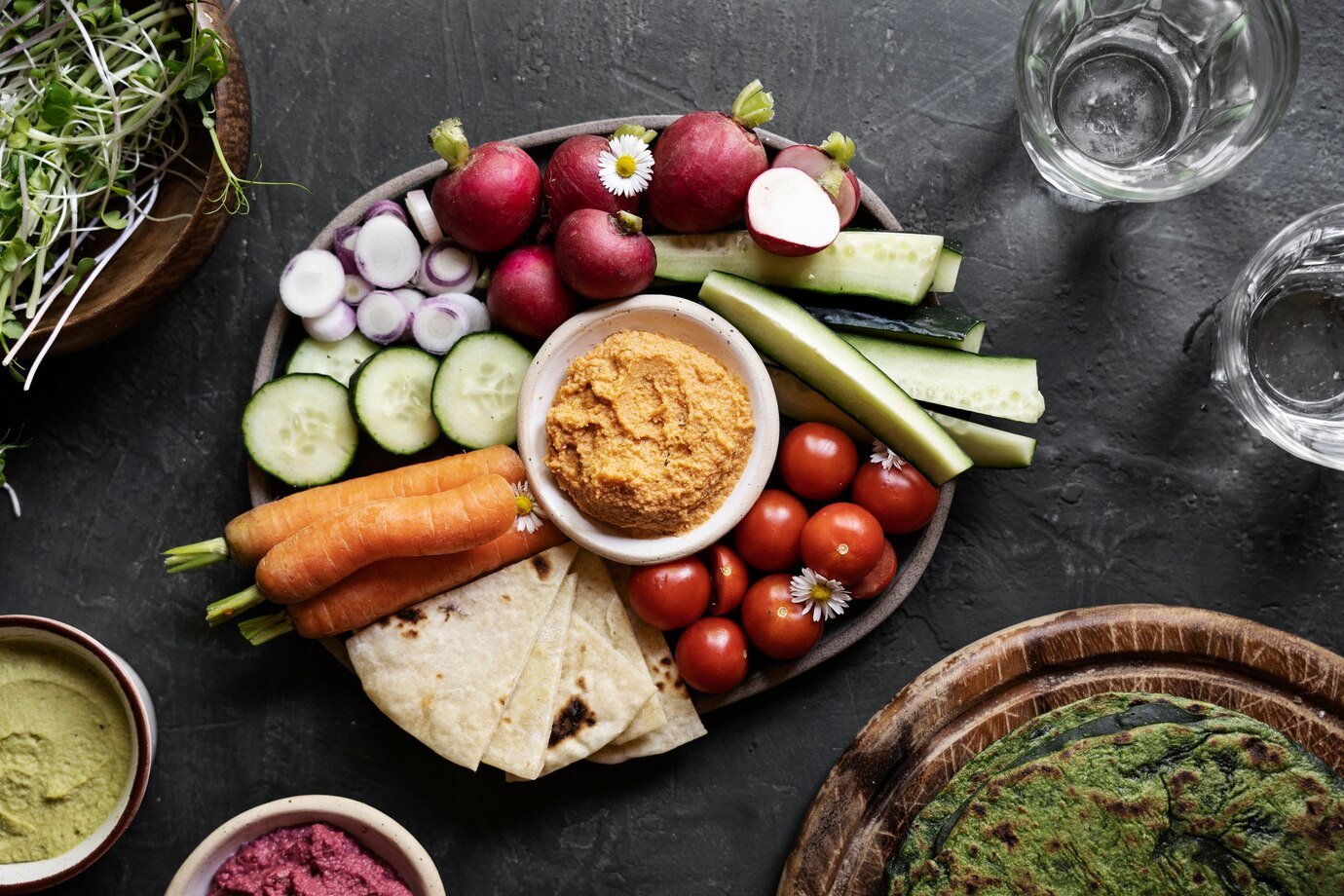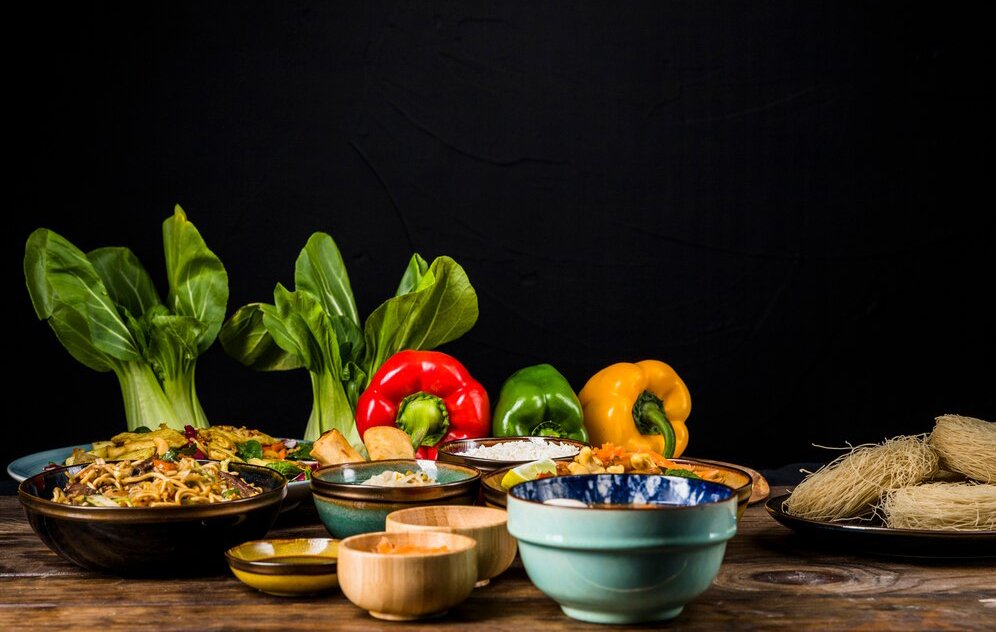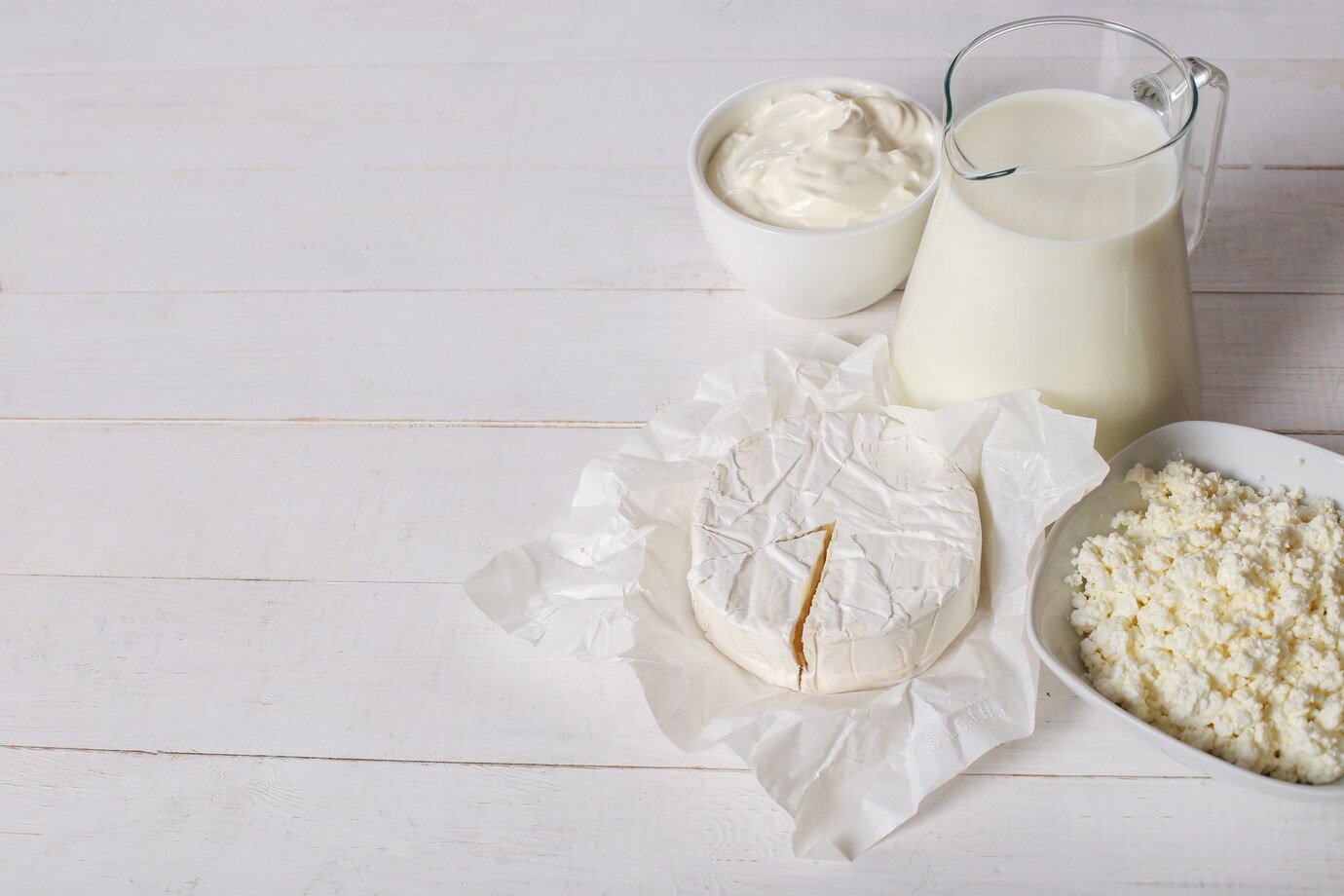
What is anti diet Know according to ayurveda, Why you should avoid them.
In Ayurveda, an ancient Indian system of medicine, the concept of diet is not about restriction or elimination in the way the term “antidiet” might suggest in contemporary diet culture. Rather, Ayurvedic dietary principles focus on balance, individual constitution (Prakriti), and the unique needs of different body types (doshas: Vata, Pitta, Kapha). The idea of an “antidiet” according to Ayurveda could be interpreted as practices or dietary approaches that go against this principle of balance and harmony.
Here’s why you should avoid approaches that could be considered “antidiet” in the context of Ayurveda:
- Ignoring Individual Needs: Ayurveda emphasizes that everyone has a unique constitution and balance of doshas. Diets or food practices that apply the same rules to everyone ignore these individual differences and may lead to imbalances, rather than promoting health.
- Focusing Solely on Weight Loss: Diets that prioritize weight loss above all else often do not consider the overall wellbeing and balance of the body. Ayurveda encourages a holistic view of health, where physical, mental, and spiritual health are interconnected.
- Excessive Restriction: Highly restrictive diets may deprive the body of essential nutrients and disrupt digestive health. Ayurveda promotes a balanced and moderate approach to eating, where all six tastes (sweet, sour, salty, bitter, pungent, astringent) are included to balance the doshas.
- Ignoring Seasonal and Daily Rhythms: Ayurveda teaches the importance of aligning your diet with the rhythms of nature, such as the seasons and the time of day. Diets that do not consider these natural rhythms can disrupt the body’s innate balance.
- Overemphasis on Raw Foods: While raw foods can be beneficial in moderation, Ayurveda often recommends cooked foods for their ease of digestion. Diets that focus heavily on raw foods may not be suitable for everyone, especially those with a Vata or Kapha dominance, as they can aggravate these doshas.
- Neglecting Mindful Eating Practices: Eating practices that encourage fast, distracted, or emotional eating are contrary to Ayurvedic principles, which advocate for mindful, conscious eating in a calm and relaxed environment. This approach supports digestion and absorption of nutrients.
In essence, any dietary approach that disregards the principles of balance, individual constitution, and holistic wellbeing could be considered “antidiet” from an Ayurvedic perspective. Ayurveda teaches the importance of a personalized, balanced approach to nutrition that supports overall health and harmony within the body and mind.
1. let’s understand what is Incompatible Diet?

Incompatible Diet, known as “Viruddha Ahara” in Ayurveda, refers to the concept of food combinations that are considered harmful to health due to their opposing properties. Ayurveda emphasizes that the way foods are combined can significantly impact the digestive system and overall health. Certain food combinations can disturb the balance of the doshas (Vata, Pitta, and Kapha), leading to the production of toxins (ama) in the body, impairing digestive fire (Agni), and causing various health issues over time.
Some examples of incompatible food combinations according to Ayurveda include:
- Fruit with Milk: Fruit, especially sour fruits, combined with milk is said to slow down digestion and produce toxins. This is because fruit, particularly when sour, and milk have different digestion times and require different digestive enzymes.
- Fish with Milk: This combination is believed to be highly incompatible, as it is said to disturb the blood’s and skin’s health, potentially leading to issues like allergies or skin conditions.
- Hot and Cold Foods Together: Consuming hot and cold foods together can disrupt the digestive fire (Agni), leading to impaired digestion.
- Honey and Ghee in Equal Proportions: According to Ayurvedic texts, mixing honey and ghee in equal quantities by weight is considered toxic, though the exact reason is not clearly defined in ancient texts.
- Nightshades with Dairy: Nightshade vegetables (like tomatoes, potatoes, and eggplant) combined with dairy are believed to produce toxins and cause inflammation and digestive issues.
- Melon with Grain: Melons are to be eaten alone or left alone because they digest quickly and do not combine well with other foods, which can lead to digestive disturbances.
- Yogurt with Fruit: This combination is thought to impair digestion and produce toxins, particularly impacting the sinus, leading to colds, coughs, and allergies.
Ayurveda suggests that eating incompatible foods can lead to various ailments, from minor digestive issues to more serious health problems over time. The concept of Viruddha Ahara is not only about the physical properties of food but also about the timing of consumption, the season, and the individual’s constitution (Prakriti).
Understanding and applying the principles of compatible and incompatible foods can help in maintaining a balanced diet that supports digestive health and overall wellbeing according to Ayurvedic principles. However, it’s also important to consider modern nutritional science and personal experience when making dietary choices, as individual reactions to food combinations can vary.
2. Some diets which are examples of viruddh aahar.

The concept of Viruddha Aahar (incompatible diet) in Ayurveda encompasses various dimensions, including the combination of foods with opposing qualities, preparation methods that alter the inherent nature of the food, and consumption patterns that disrupt the body’s natural rhythms. Below are some specific examples of diets or food combinations that illustrate the principle of Viruddha Aahar:
- Fruit with Dairy Products: As mentioned, combining fruits, especially sour ones like oranges or strawberries, with dairy products like milk or yogurt is considered incompatible. This is because fruits and dairy have different digestive enzymes and timings, leading to indigestion and the production of toxins.
- Ice Cream after Night Meals: Eating cold desserts like ice cream immediately after dinner can dampen the digestive fire (Agni), making digestion sluggish. This is a combination of cold food after a hot meal, which is considered incompatible.
- Heating Honey: Honey is considered toxic when heated directly or added to very hot beverages. In Ayurveda, honey’s natural qualities are altered when heated, making it incompatible with one’s digestive system and leading to imbalances.
- Eating Fish with Milk or Dairy Products: This combination is believed to be very incompatible, potentially leading to skin diseases and other health issues due to the opposing qualities of fish (heating) and milk (cooling).
- Green Leafy Vegetables with Milk: Leafy greens combined with milk can be difficult to digest and may lead to the production of toxins, as the inherent properties of these foods clash.
- Beans and Fruits: Beans combined with fruits can lead to gas and bloating due to the fermentation process in the gut, showcasing an example of incompatible food combinations based on their digestive requirements.
- Ghee (Clarified Butter) and Honey in Equal Quantities: Mixing ghee and honey in equal weight is considered incompatible according to Ayurvedic texts, as this specific combination is believed to disrupt internal harmony and create toxins.
- Hot and Cold Beverages Together: Drinking hot beverages immediately followed by cold beverages (or vice versa) can disrupt the Agni (digestive fire) and impair digestion, leading to discomfort and digestive issues.
- Yogurt at Night: Consuming yogurt at night is considered incompatible by Ayurveda. Yogurt is heavy to digest and can increase mucus production when consumed late, potentially leading to respiratory issues and congestion.
These examples underscore the Ayurvedic principle that not only the quality of individual foods but also the context of their consumption (such as combinations, time of day, and the individual’s constitution) is crucial in determining their effect on health. It’s always recommended to consult with an Ayurvedic practitioner for personalized dietary advice, as individual tolerances and health conditions can vary widely.
3. Some mistakes that we knowingly or unknowingly make in our daily life.

In our daily lives, due to convenience, habits, or lack of awareness, we might engage in practices that lead to the consumption of incompatible diets (Viruddha Aahar). These practices can disrupt our digestive system and may lead to longterm health issues according to Ayurvedic principles. Here are some common mistakes related to incompatible diets that people might make knowingly or unknowingly:
- Consuming Fruit with or Directly After Meals: Eating fruit right after meals can slow down digestion because fruits digest quicker than most foods. This can lead to fermentation in the gut, producing gas and bloating.
- Drinking Cold Water Just After Eating: Drinking icecold water immediately after meals can dampen the digestive fire (Agni), making digestion inefficient. It’s better to drink warm water or at room temperature.
- Mixing Milk with Sour, Salty, or Citrus Ingredients: Adding sour fruits, salt, or citrus juices to milk can curdle it, making it hard to digest and potentially leading to the production of toxins in the body.
- Eating Yogurt at Night: Yogurt is heavy and can increase Kapha dosha, leading to mucus formation. Consuming it at night, especially in large quantities, might disturb sleep and digestion.
- Combining Meat with Dairy Products: This combination is hard to digest and can lead to toxin production. For instance, cheeseburgers (meat with cheese) are a common part of many diets but are considered incompatible in Ayurveda.
- Reheating Honey: Honey becomes toxic when heated, according to Ayurveda. Adding honey to very hot beverages or cooking with it can change its natural properties, making it difficult to digest.
- Snacking Late at Night: Eating late at night can disrupt the natural cycle of digestion and rest, leading to indigestion and accumulation of toxins because the body’s digestive fire is weaker at night.
- Overeating or Eating Before the Previous Meal Has Digested: Overeating or eating too soon after a meal can overload the digestive system, leading to indigestion, discomfort, and the formation of ama (toxins).
- Consuming Leftovers or Processed Foods Frequently: Eating foods that are stale, overly processed, or reheated multiple times can diminish their life force (Prana), making them less nourishing and harder to digest.
- Ignoring Seasonal and Personal Dosha Considerations: Eating foods that are not aligned with the current season or your personal dosha can create imbalances. For example, consuming too many cold, dry foods in winter can aggravate Vata.
Awareness and mindfulness in eating habits can help mitigate these mistakes. By paying attention to the principles of Ayurveda regarding diet and digestion, one can improve their health and wellbeing by avoiding incompatible food combinations and practices. It’s beneficial to listen to one’s body and observe how different foods and combinations affect digestion and overall health, and when possible, consult with an Ayurvedic practitioner for personalized advice.
4. Consuming foods made from curd and milk together.

In Ayurveda, combining certain types of foods can lead to what’s called Viruddha Aahar (incompatible food combinations), which is believed to disturb the body’s internal balance and can potentially lead to digestive issues and the accumulation of toxins (ama). Generally, consuming foods made from curd (yogurt) and milk together is often discouraged in Ayurvedic dietary practices because milk and yogurt each have unique properties and actions within the body, and combining them can be considered incompatible.
Milk is considered a Sattvic food in Ayurveda, promoting calmness and clarity. It is cooling, sweet, and nourishing, and it’s typically digested best when consumed alone or with other compatible foods. On the other hand, curd is sour in taste and heating in nature, and it can stimulate digestive fire and sometimes increase Kapha and Pitta doshas.
Here are a few reasons why combining milk and curd is generally not recommended:
- Digestive Conflicts: Milk and curd have different qualities and actions in the digestive tract. While milk is cooling, curd is heating. When consumed together, they can confuse the digestive process and potentially lead to indigestion, bloating, and gas.
- Dosha Imbalance: From an Ayurvedic perspective, the combination can lead to an imbalance of the doshas. The heating nature of curd can aggravate Pitta, while its heavy quality can increase Kapha, leading to issues like congestion, acne, or excess mucus production.
- Production of Ama: The incompatible combination can lead to the production of ama, or digestive toxins, which is considered the root cause of many diseases in Ayurveda. Ama results from improper digestion and can accumulate in the body, leading to various health issues over time.
However, it’s essential to remember that dietary guidelines in Ayurveda can be highly individualized. Factors like an individual’s constitution (Prakriti), current state of health, digestive capacity (Agni), and even the season can influence what is considered beneficial or detrimental. While combining milk and curd is generally not recommended, there might be exceptions based on specific conditions or traditional recipes that have been adapted to make such combinations more digestible (e.g., through the addition of spices or other ingredients).
As with any dietary advice, observing how your body responds to certain food combinations is crucial. If you notice discomfort or digestive issues after consuming milk and curd together, it may be beneficial to avoid this combination. For personalized advice, consulting with an Ayurvedic practitioner is always the best approach.
5. Adding milk to black tea or green tea.

Adding milk to black tea or green tea is a common practice in various cultures around the world, notably in British tea culture, as well as in some South Asian countries. However, from an Ayurvedic perspective, the combination of milk with black or green tea might be considered less than ideal for several reasons, although it’s not typically highlighted as a strongly incompatible food combination (Viruddha Aahar) like others previously mentioned.
Here are some considerations from both an Ayurvedic and general health perspective:
- Digestive Impact: Ayurveda teaches that every food item has its own taste (Rasa), energy (Virya), and postdigestive effect (Vipaka), and combining foods with very different qualities can potentially disrupt digestion. Tea, especially green tea, has astringent and slightly bitter qualities with a light and drying effect, which contrasts with the sweet, cooling, and heavy nature of milk. This contrast could potentially dampen the digestive fire (Agni) for some individuals, leading to indigestion or the formation of ama (toxins).
- Dosha Considerations: Adding milk to tea might also be considered from the perspective of an individual’s doshic balance. For someone with a predominance of Vata, the warming and nourishing qualities of milk can balance the drying effect of the tea. In contrast, for someone with a Kapha imbalance, the combination could exacerbate Kapha due to the heaviness of milk.
- Nutritional Perspective: Some scientific studies suggest that adding milk to tea may reduce the bioavailability of certain antioxidants found in tea, such as catechins in green tea, which are believed to be responsible for many of tea’s health benefits. However, these effects can vary, and the overall impact on health may not be significant for everyone.
- Cultural and Personal Preferences: It’s important to consider that dietary habits are deeply influenced by cultural traditions and personal preferences. Many people enjoy milk in their tea and do so without apparent adverse effects. It’s also possible to make adjustments that could mitigate potential issues, such as using smaller amounts of milk or choosing milk alternatives.
In summary, while adding milk to black or green tea might not be ideal from a strict Ayurvedic perspective, especially for those with certain doshic imbalances or digestive issues, it’s also a practice that many people enjoy and find comforting. As always, it’s beneficial to be mindful of how your body responds to different food combinations and to make adjustments that support your individual health and wellbeing. If you have specific health concerns or dietary needs, consulting with an Ayurvedic practitioner can provide personalized guidance.
6. Consuming garlic and tea together.

Consuming garlic and tea together doesn’t fall under the typical Ayurvedic classification of Viruddha Aahar (incompatible food combination), but understanding both garlic and tea’s properties can help assess their compatibility and impact on health.
Garlic is highly valued in Ayurveda for its medicinal properties. It is considered to have a heating effect on the body (Ushna Virya), and it’s known to stimulate the digestive fire (Agni), support the cardiovascular system, and help in balancing Kapha and Vata doshas. However, it can also aggravate Pitta due to its pungent taste and heating qualities.
Tea, especially green or black, is generally cooling (though less so for black tea) and has a slightly bitter and astringent taste. Tea is thought to be balancing for Pitta and Kapha but may increase Vata due to its drying effect.
Combining Garlic and Tea:
There’s no direct indication in Ayurveda that combining garlic and tea is harmful. The potential effects of this combination would largely depend on one’s individual constitution (Prakriti), current state of dosha balance, and any existing health conditions.
For individuals with high Pitta or those prone to Pittarelated issues (like acidity or inflammation), consuming garlic, which is heating, followed by tea (especially if it’s green tea, which is slightly cooling but contains caffeine) might not cause significant problems, and the cooling nature of the tea might even offer a slight balance to garlic’s heat. However, the caffeine in tea can stimulate Pitta in some individuals.
For those with a Vata constitution or imbalance, both garlic and tea might be acceptable, especially if the tea is not consumed in excess, as both can potentially aggravate Vata due to dryness (in the case of tea) and the stimulating properties of garlic.
Individuals with a Kapha constitution might find this combination beneficial, as the heating properties of garlic can help balance Kapha’s cool and moist nature, and tea can provide a gentle stimulating effect.
General Considerations:
Consuming large amounts of garlic might lead to digestive discomfort for some people, especially on an empty stomach.
Tea, particularly when consumed in large quantities or very strong, can irritate the digestive tract or disrupt sleep patterns due to its caffeine content.
Conclusion:
Consuming garlic and tea together is not inherently problematic according to Ayurveda or general nutritional perspectives, but individual responses can vary. It’s always wise to be attentive to how specific food combinations affect your body and adjust your diet accordingly. If you have specific health concerns or dietary restrictions, consulting with a healthcare provider or an Ayurvedic practitioner is advisable.
7. What kind of food should you eat according to Ayurveda?

Ayurveda, the ancient Indian system of medicine, emphasizes a balanced and individualized approach to eating that considers an individual’s unique constitution (dosha), the current state of health, and the seasons. According to Ayurveda, food is not just a source of physical nourishment; it also has a profound impact on your mental, emotional, and spiritual wellbeing. The three doshas — Vata, Pitta, and Kapha — are biological energies found throughout the human body and mind that govern all physical and mental processes. A balanced diet in Ayurveda aims to maintain or restore harmony among these doshas.
Here’s a general guide on what kind of food to eat according to Ayurveda, tailored to each dosha:
- Vata (Air and Space Elements)
People with a predominant Vata dosha are typically thin, energetic, and creative, but they can easily become anxious and suffer from digestive issues.
Favor: Warm, cooked, nourishing, and easily digestible foods. Sweet, sour, and salty tastes are beneficial. Include foods like cooked grains (rice, wheat), cooked vegetables, warm milk, ghee, nuts, seeds, and hearty soups.
Avoid: Cold, dry, and raw foods. Reduce intake of bitter, astringent, and pungent tastes. Avoid consuming too much caffeine and raw vegetables, especially in cold weather.
- Pitta (Fire and Water Elements)
Individuals with a predominant Pitta dosha have a fiery nature. They are usually wellbuilt, have a strong appetite, and are goaloriented but can become irritable and suffer from heatrelated issues like inflammation.
Favor: Cool or warm (not hot) foods with sweet, bitter, and astringent tastes. Favor cooling foods like cucumbers, sweet fruits, and dairy. Grains like wheat and barley are good, as well as coconut water and mint tea.
Avoid: Hot, spicy, oily, and fried foods. Reduce foods that are sour, salty, and pungent. Limit alcohol and caffeine intake.
- Kapha (Water and Earth Elements)
Kaphadominant individuals tend to have a sturdy build and a calm, steady demeanor but can struggle with weight gain and sluggishness when out of balance.
Favor: Light, warm, and dry foods. Favor pungent, bitter, and astringent tastes. Think of steamed vegetables, spicy teas like ginger tea, and light grains like quinoa and barley.
Avoid: Heavy, oily, and sweet foods. Reduce intake of sweet fruits, nuts, dairy products, and chilled beverages.
General Ayurvedic Dietary Principles for All Doshas:
Eat primarily plantbased foods, including a variety of grains, legumes, vegetables, and fruits.
Include all six tastes in every meal if possible: sweet, sour, salty, bitter, pungent, and astringent.
Cook with a variety of spices and herbs that help balance your dosha.
Eat mindfully and in a calm environment to enhance digestion.
Prefer seasonal and locally available foods to align with the natural cycles.
Listen to your body’s hunger and fullness cues, and try to eat at regular times each day.
It’s important to note that Ayurveda encourages personalization and moderation. The above guidelines can be adjusted based on an individual’s specific needs, current state of health, season, and geographical location. Consulting with an Ayurvedic practitioner can provide more tailored recommendations.
8. Rules for drinking water are also mentioned in Ayurveda.

In the ancient Indian system of medicine, offers detailed guidance on almost every aspect of lifestyle, including the proper way to consume water, which is considered vital for maintaining health and balance within the body. According to Ayurvedic principles, how, when, and the type of water you drink can significantly affect your digestion, vitality, and overall wellbeing. Some of these guidelines include:
- Warm or Room Temperature Water: Ayurveda suggests drinking water that is warm or at room temperature instead of cold water, as it is believed to aid digestion and help the body remove toxins. Warm water is thought to be particularly beneficial in the morning and before meals.
- Sipping Water Throughout the Day: Instead of drinking large amounts of water at once, Ayurveda recommends sipping small amounts of water throughout the day. This practice is believed to help hydrate the body more effectively and support the digestive process.
- Listening to Your Body: Ayurveda advises drinking water when you feel thirsty, as thirst signals the need for hydration. However, it also emphasizes not to overdo it, as excessively consuming water can dilute digestive juices and impair digestion.
- Drinking Water Before Meals: It’s suggested to drink water about 30 minutes before meals to prepare the digestive system, but not right before or during meals, as this can dilute digestive acids and lead to impaired digestion.
- Avoiding or Minimizing Cold Water: Drinking cold water, especially with meals or immediately after, is generally discouraged in Ayurveda. Cold water is believed to douse the digestive fire (Agni), which can weaken digestion and lead to various digestive issues.
- Using Copper Vessels: Some Ayurvedic practices also recommend storing water in copper vessels, which is thought to imbue the water with positive health properties due to the leaching of trace amounts of copper, a mineral important for the body in small amounts.
- Detoxifying with Herbal Waters: Ayurveda also endorses the use of herbal waters, which are prepared by boiling water with specific herbs or spices (like cumin, coriander, fennel, or ginger) depending on one’s dosha (body type) and specific health needs. This is believed to help detoxify the body and enhance digestion.
It’s important to note that these guidelines should be adapted to individual needs and conditions, and one should always listen to their body. Modern science and nutrition also recognize the importance of hydration for health, but recommendations can vary based on factors like climate, activity level, and individual health conditions.
9. What should be your daily routine according to Ayurveda?

Ayurveda has taught us to maintain balance throughout life. The scriptures provide guidelines about ideal ways of living in terms of Sanatan (daily diet), Ratricharya (night diet) and Ritucharya (seasonal diet) which are more prevalent than ever in today’s era.
This is key information as far as preventive medicine is concerned.
Along with proper diet, proper exercise should also be done.The benefits of exercising daily are limitless. Physical exercise gives lightness to the body, increases its stamina and endurance, stability and capacity for endurance.
It helps in removing body toxins/defects and increases appetite. It boosts immunity, provides strength and vitality. Physical exercise is very important to avoid or reduce obesity. It improves muscle and bone strength, strengthens the nervous system.
What is anti diet Know according to ayurveda
Foods to avoid
- Proteins: red meat, seafood, egg yolks.
- Dairy: sour cream, cheese, buttermilk.
- Fruits: sour or unripe fruits, such as grapes, apricots, papaya, grapefruit, and sour cherries.
- Vegetables: chili peppers, beets, tomatoes, onions, eggplant.
- Grains: brown rice, millet, corn, rye.
Is milk prohibited in Ayurveda?
especially if you follow a vegetarian lifestyle. In order to digest milk properly, one should avoid drinking cold milk right out of the refrigerator. Ojas brings strength, strong immunity, happiness, and contentment, according to ayurveda. Therefore, milk is a very important food to include regularly in one’s diet,
Milk and curd can be eaten together?
Milk and curd come from the same family, is animal-sourced protein and thus they should not be consumed together. It can cause diarrhea, acidity, bloating, and gas.
What is the false food combination with curd?
6 foods you should avoid combining with curd… Curd is definitely a wonder food; one should be careful about what food you pair it with.
Fish. Protein rich fish should not be combined with curd as it gets difficult for digestion. …
Fried food items. …
Onion.
Mango.
Milk.
Tea.
